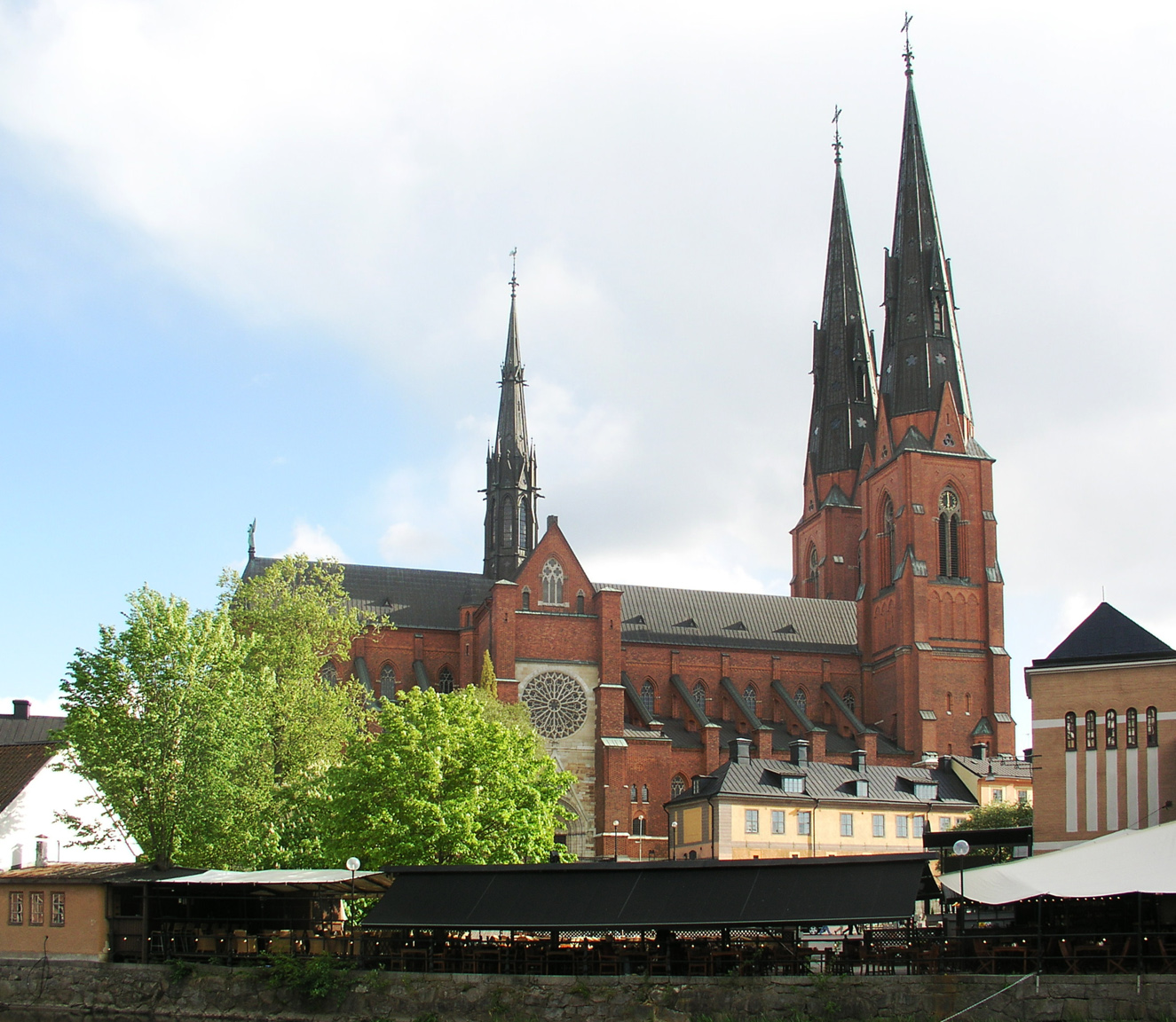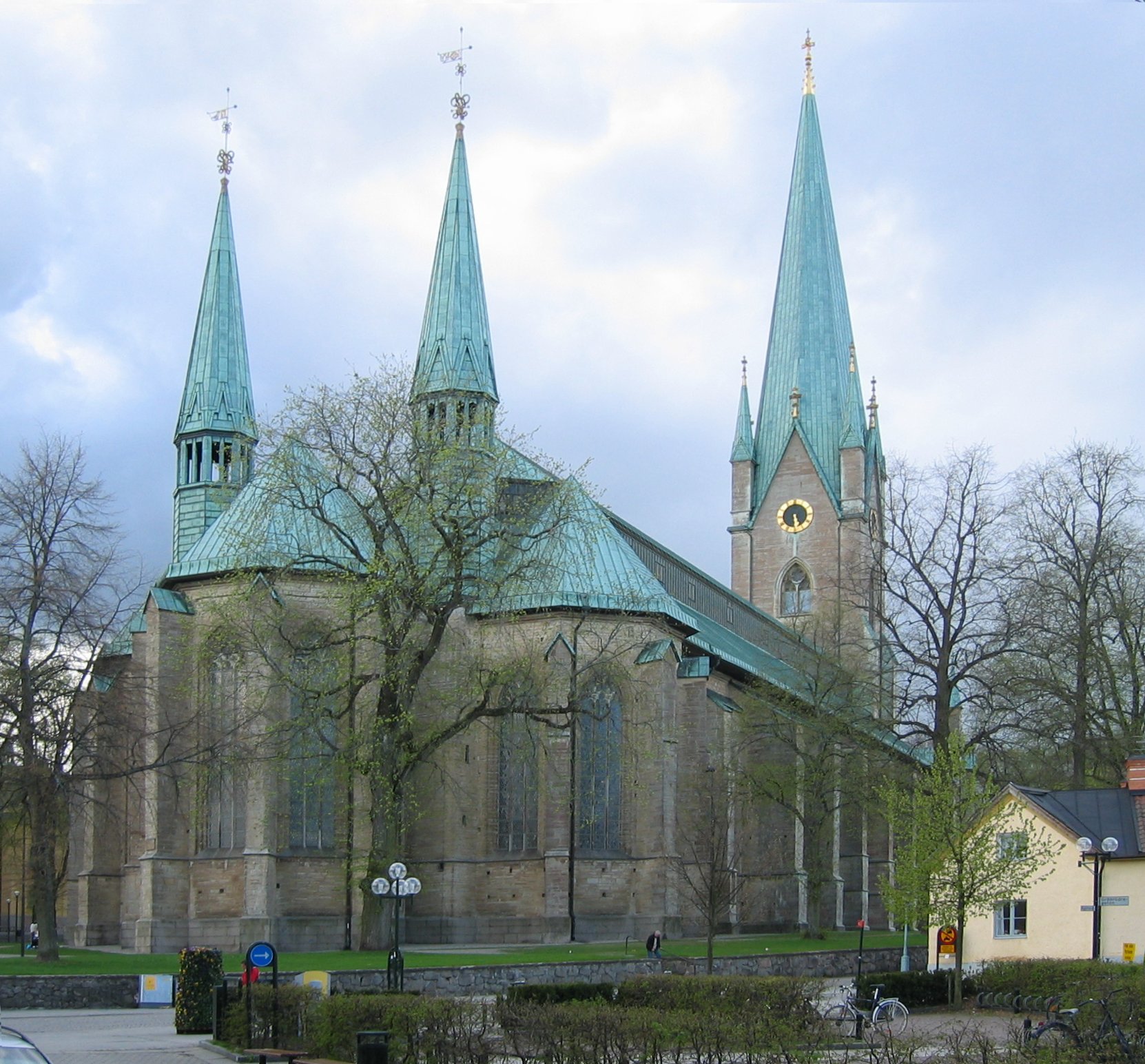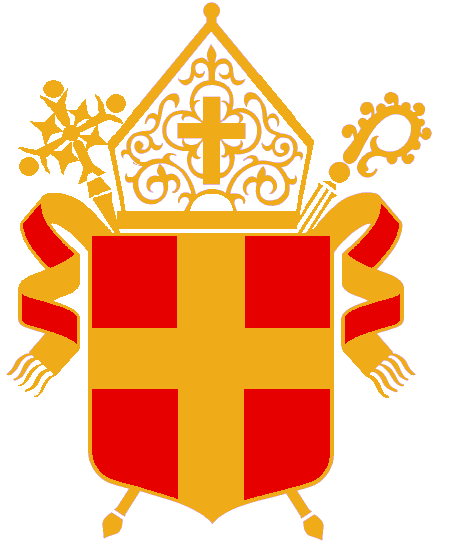|
Johan Håkansson
Johan Håkansson (also latinized as Johannes Haquini; died 1432) was the archbishop of Uppsala in Sweden from 1421 to 1432. Biography His first known occupations were at a school in Söderköping and as a canon in Linköping. In 1411 he enrolled at Vadstena monastery. In 1418 he was sent on an important assignment to Rome, from where he returned in 1420. In 1421 the previous Archbishop of Uppsala, Jöns Gerekesson resigned. Three new candidates were presented to the Swedish King Eric of Pomerania, of whom he chose Johan Håkansson. Haquini's history as a monk set the standards for his time as archbishop. He allowed the clerics to be freed from taxes, and he built a permanent house for the archbishop (demolished during Gustav Vasa's liberation war in 1522). See also * List of archbishops of Uppsala This article lists the archbishops of Uppsala. Before the Reformation * 1164–1185: Stefan * 1185–1187: Johannes * 1187–1197: Petrus * 1198–1206: Olov Lambatunga * ... [...More Info...] [...Related Items...] OR: [Wikipedia] [Google] [Baidu] |
Archbishop Of Uppsala
The Archbishop of Uppsala (spelled Upsala until the early 20th century) has been the primate of Sweden in an unbroken succession since 1164, first during the Catholic era, and from the 1530s and onward under the Lutheran church. Historical overview There have been bishops in Uppsala from the time of Swedish King Ingold the Elder in the 11th century. They were governed by the archbishop of Hamburg-Bremen until Uppsala was made an archbishopric in 1164. The archbishop in Lund (which at that time belonged to Denmark) was declared primate of Sweden, meaning it was his right to select and ordain the Uppsala archbishop by handing him the pallium. To gain independence, Folke Johansson Ängel in 1274 went to Rome and was ordained directly by the pope. This practice was increasing, so that no Uppsala archbishop was in Lund after Olov Björnsson, in 1318. In 1457, the archbishop Jöns Bengtsson (Oxenstierna) was allowed by the pope to declare himself primate of Sweden. Uppsala (t ... [...More Info...] [...Related Items...] OR: [Wikipedia] [Google] [Baidu] |
Linköping
Linköping ( , ) is a city in southern Sweden, with around 167,000 inhabitants as of 2024. It is the seat of Linköping Municipality and the capital of Östergötland County. Linköping is also the episcopal see of the Diocese of Linköping (Church of Sweden) and is well known for its cathedral. Linköping is the center of an old cultural region and celebrated its 700th anniversary in 1987. Dominating the city's skyline from afar is the steeple of Linköping Cathedral, the cathedral (). Nowadays, Linköping is known for its Linköping University, university and its High tech, high-technology industry. Linköping wants to create a sustainable development of the city and therefore plans to become a Carbon neutrality, carbon-neutral community by 2025. Located on the Östergötland Plain, Linköping is closely linked to Norrköping, roughly to the east, near the sea. History The city is possibly named after the ''Lionga thing, Lionga ting'' assembly which according to Medieval ... [...More Info...] [...Related Items...] OR: [Wikipedia] [Google] [Baidu] |
Roman Catholic Archbishops Of Uppsala
Roman or Romans most often refers to: *Rome, the capital city of Italy *Ancient Rome, Roman civilization from 8th century BC to 5th century AD *Roman people, the people of Roman civilization *Epistle to the Romans, shortened to Romans, a letter written by Paul, found in the New Testament of the Christian Bible * Ar-Rum (), the 30th sura of the Quran. Roman or Romans may also refer to: Arts and entertainment Music * Romans (band), a Japanese pop group * ''Roman'' (album), by Sound Horizon, 2006 * ''Roman'' (EP), by Teen Top, 2011 *" Roman (My Dear Boy)", a 2004 single by Morning Musume Film and television *Film Roman, an American animation studio * ''Roman'' (film), a 2006 American suspense-horror film * ''Romans'' (2013 film), an Indian Malayalam comedy film * ''Romans'' (2017 film), a British drama film * ''The Romans'' (''Doctor Who''), a serial in British TV series People * Roman (given name), a given name, including a list of people and fictional characters *Roman (surname ... [...More Info...] [...Related Items...] OR: [Wikipedia] [Google] [Baidu] |
1432 Deaths
Year 1432 ( MCDXXXII) was a leap year starting on Tuesday of the Julian calendar. Events January–March * January 1 – ** Yusuf IV is placed on the throne as the new Sultan of Granada, after Muhammad IX is deposed with the support of King Juan II of Castile and Leon. Yusuf dies later in the year and Muhammad IX is restored to the throne a third time ** Iliaș succeeds his father as Prince of Moldavia. * January 6 – The siege of Pouancé is undertaken by John V, Duke of Brittany, against his nephew Jean II, Duke of Alençon, as part of a conflict involving the payment of a dowry. The siege lasts until February 22 when Alençon surrenders. * February 13 – The tall Statue of Gommateshwara is consecrated by King Veera Pandya in the Indian city of Karkala, capital of the Vijayanagara Empire and now part of the Karnataka state. * March 5 – The Treaty of Rennes is signed between the Kingdom of France (led by King Charles VII and the Duchy of ... [...More Info...] [...Related Items...] OR: [Wikipedia] [Google] [Baidu] |
List Of Archbishops Of Uppsala
This article lists the archbishops of Uppsala. Before the Reformation * 1164–1185: Stefan * 1185–1187: Johannes * 1187–1197: Petrus * 1198–1206: Olov Lambatunga * 1207–1219: Valerius * 1219 (1224)–1234: Olov Basatömer * 1236–1255: Jarler * 1255–1267: Lars * 1274–1277: Folke Johansson Ängel * 1278–1281: Jakob Israelsson * 1281–1284: Johan Odulfsson (not ordained) * 1285–1289: Magnus Bosson * 1289–1291: Johan * 1292–1305: Nils Allesson * 1308–1314: Nils Kettilsson * 1315–1332: Olov Björnsson * 1332–1341: Petrus Filipsson * 1341–1351: Heming Nilsson * 1351–1366: Petrus Torkilsson * 1366–1383: Birger Gregersson * 1383–1408: Henrik Karlsson * 1408–1421: Jöns Gerekesson (''Johannes Gerechini'') * 1421–1432: Johan Håkansson * 1432–1438: Olov Larsson (''Olaus Laurentii'') * 1433–1434: Arnold of Bergen (not ordained) * 1438–1448: Nicolaus Ragvaldi * 1448–1467: Jöns Bengtsson Oxenstierna * 1468–1469: Tor ... [...More Info...] [...Related Items...] OR: [Wikipedia] [Google] [Baidu] |
Gustav Vasa
Gustav Eriksson Vasa (12 May 1496 – 29 September 1560), also known as Gustav I, was King of Sweden from 1523 until his death in 1560. He was previously self-recognised Protector of the Realm (''Reichsverweser#Sweden, Riksföreståndare'') from 1521, during the ongoing Swedish War of Liberation against King Christian II of Denmark, Norway and Sweden. Gustav rose to lead the Swedish War of Liberation following the Stockholm Bloodbath, where his father was executed. Gustav's election as king on 6 June 1523 (the National Day of Sweden) and his triumphant Conquest of Stockholm, entry into Stockholm eleven days later marked Sweden's final secession from the Kalmar Union. During his reign, Gustav initiated the Protestant reformation in Sweden, transformed the country from an elective monarchy, elective to a hereditary monarchy and established a standing Swedish Army, army and Swedish Navy, navy. Early life Gustav Eriksson, a son of Cecilia Månsdotter Eka and Erik Johansson Vasa, w ... [...More Info...] [...Related Items...] OR: [Wikipedia] [Google] [Baidu] |
Monk
A monk (; from , ''monachos'', "single, solitary" via Latin ) is a man who is a member of a religious order and lives in a monastery. A monk usually lives his life in prayer and contemplation. The concept is ancient and can be seen in many religions and in philosophy across numerous cultures. The Greek word for "monk" may be applied to men or women. In English, however, "monk" is applied mainly to men, while ''nun'' is typically used for female monastics. Although the term ''monachos'' is of Christianity, Christian origin, in the English language ''monk'' tends to be used loosely also for both male and female ascetics from other religious or philosophical backgrounds. However, being generic, it is not interchangeable with terms that denote particular kinds of monk, such as cenobite, hermit, anchorite, or Hesychasm, hesychast. Traditions of Christian monasticism exist in major Christian denominations, with religious orders being present in Catholicism, Lutheranism, Oriental Ort ... [...More Info...] [...Related Items...] OR: [Wikipedia] [Google] [Baidu] |
Eric Of Pomerania
Erik of Pomerania ( 1381/1382 – 24 September 1459) ruled over the Kalmar Union from 1396 until 1439. He was initially co-ruler with his great-aunt Margaret I of Denmark, Margaret I until her death in 1412. Erik is known as Erik III as King of Norway (1389–1442), Erik VII as King of Denmark (1396–1439) and has been called Erik XIII as King of Sweden (1396–1434, 1436–39). Erik was ultimately deposed from all three kingdoms of the union, but in 1449 he inherited one of the partitions of the Duchy of Pomerania and ruled it as duke until his death in 1459. His epithet ''of Pomerania'' was a pejorative intended to insinuate that he did not belong in Scandinavia. Succession background Erik was born in either 1381 or 1382 in Darłowo (formerly Rügenwalde), Pomerania, Poland. Named Bogusław (Bogislaw) at birth, he was the son of Wartislaw VII, Duke of Pomerania, and Maria of Mecklenburg-Schwerin. Bogislaw's great-aunt Margaret I of Denmark, Margaret I, who ruled the kingdom ... [...More Info...] [...Related Items...] OR: [Wikipedia] [Google] [Baidu] |
Vadstena Monastery
250px, Aerial view The Abbey Pax Mariae (), more commonly referred to as Vadstena Abbey, is situated on Lake Vättern in the Roman Catholic Diocese of Stockholm and is a monastery of nuns within the Bridgettine Order. It was active from 1346 until 1595 and has been active since 1963, regaining status as an autonomous abbey in 1991. The abbey started on one of the farms donated to it by the king, but the town of Vadstena grew up around it. It was the motherhouse of the Bridgettine Order from 1346 to 1595. History Foundation and duration The abbey was founded in 1346 by Saint Bridget with the assistance of King Magnus IV of Sweden and his Queen Blanche, who made a will donating ten farms, including that of Vadstena in Dal Hundred, Östergötland, to the abbey founded by Bridget. The daughter of Saint Bridget, Saint Catherine, on arriving there in 1374 with the relics of her mother, found only a few novices under a Religious Superior. They chose Catherine as their abbess ... [...More Info...] [...Related Items...] OR: [Wikipedia] [Google] [Baidu] |
Canon (priest)
Canon () is a Christian title usually used to refer to a member of certain bodies in subject to an ecclesiastical rule. Originally, a canon was a cleric living with others in a clergy house or, later, in one of the houses within the precinct of or close to a cathedral or other major church and conducting his life according to the customary discipline or rules of the church. This way of life grew common (and is first documented) in the 8th century AD. In the 11th century, some churches required clergy thus living together to adopt the rule first proposed by Saint Augustine that they renounce private wealth. Those who embraced this change were known as Augustinians or Canons Regular, whilst those who did not were known as secular canons. Secular canons Latin Church In the Latin Church, canons are the members of a chapter, that is a body of senior clergy overseeing either a cathedral (a cathedral chapter) or a collegiate church. Depending on the title of the church, several lan ... [...More Info...] [...Related Items...] OR: [Wikipedia] [Google] [Baidu] |
Primate (bishop)
Primate () is a title or rank bestowed on some important archbishops in certain Christian churches. Depending on the particular tradition, it can denote either jurisdictional authority ( title of authority) or (usually) ceremonial precedence ( title of honour). Catholic Church In the Latin Church, a primate is an archbishop—or, rarely, a suffragan or exempt bishop—of a specific (mostly metropolitan) episcopal see (called a ''primatial see'') who has precedence over the bishoprics of one or more ecclesiastical provinces of a particular historical, political or cultural area. Historically, primates of particular sees were granted privileges including the authority to call and preside at national synods, jurisdiction to hear appeals from metropolitan tribunals, the right to crown the sovereign of the nation, and presiding at the investiture (installation) of archbishops in their sees. The office is generally found only in older Catholic countries, and is now purel ... [...More Info...] [...Related Items...] OR: [Wikipedia] [Google] [Baidu] |
Söderköping
Söderköping is a Urban areas in Sweden, locality and the seat of Söderköping Municipality, Östergötland County, Sweden with 6,992 inhabitants in 2010. Söderköping is, despite its small population, for historical reasons normally still referred to as a Stad (Sweden), ''town''. Statistics Sweden, however, only counts Urban areas of Sweden, localities with more than 10,000 inhabitants as towns. Söderköping is about 15 km southeast of the city of Norrköping. History Sigismund III Vasa became king of both Sweden and the Polish–Lithuanian Commonwealth in a personal union upon his election to the Swedish throne in 1592 amidst much controversy and religious strife. The Protestant Reformation and Catholic Counter-Reformation were in full swing and at odds everywhere in Europe in the day. Subsequently, in 1593, he signed an agreement to guarantee religious freedom to the Protestant majority of Sweden and to pacify the Protestant concerns overall by all sects and the reli ... [...More Info...] [...Related Items...] OR: [Wikipedia] [Google] [Baidu] |







